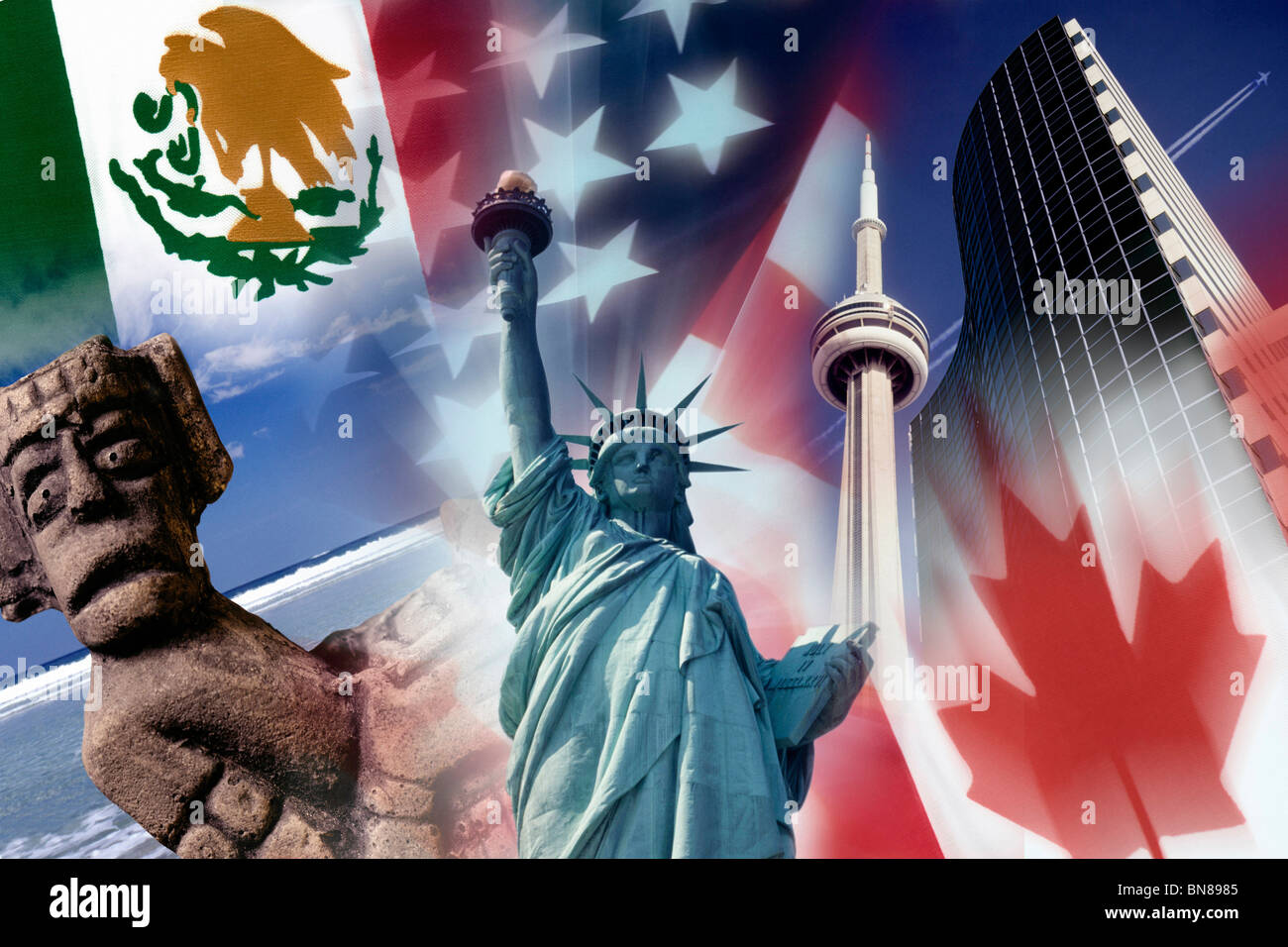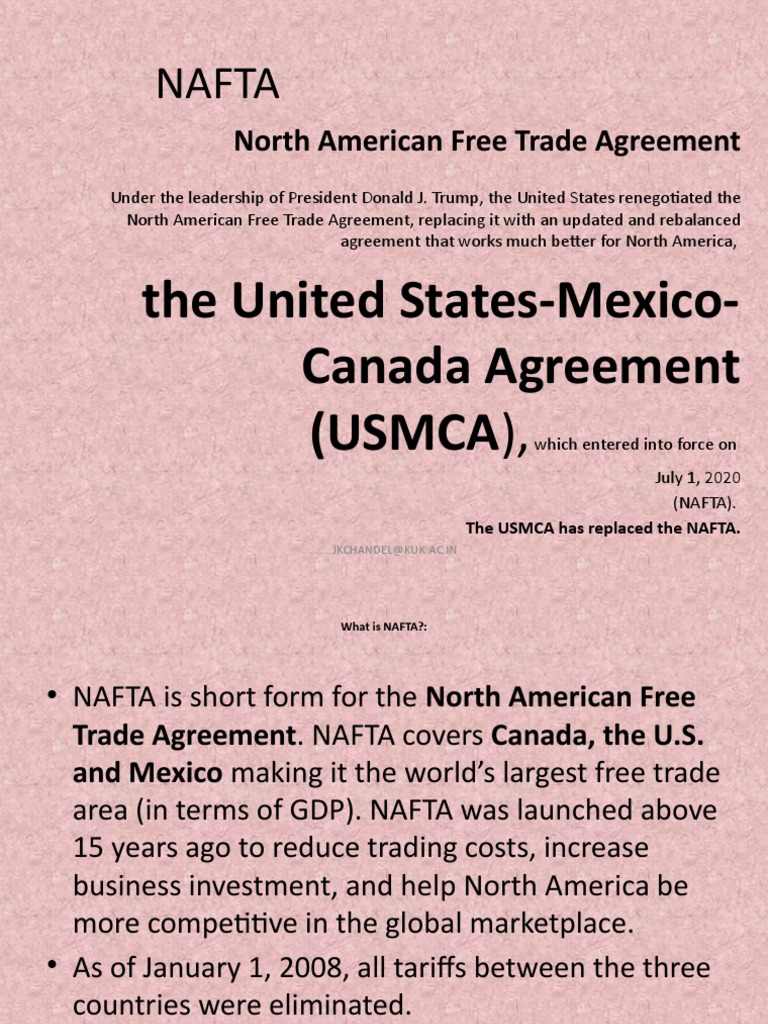Table of Contents
- Bagaimana Nafta Melakukan Perjanjian Perdagangan Bebas - Homecare24
- (PDF) The North American Free Trade Agreement (NAFTA): its effect on ...
- Lessons from NAFTA for the TPP | HuffPost
- Why The United States Joined Nafta: Likely Explanations
- NAFTA: Sejarah, Tujuan, Isi, hingga Perubahan Nama
- Solved The North American Free Trade Agreement (NAFTA) is an | Chegg.com
- NORTH AMERICA FREE TRADE AGREEMENT (NAFTA) - YouTube
- North american free trade agreement nafta hi-res stock photography and ...
- Nafta | PDF | North American Free Trade Agreement | Zapatista Army Of ...
- NAFTA-splainer : Planet Money : NPR



Definition and Purpose of NAFTA





Key Provisions of NAFTA
NAFTA comprises several key provisions that have facilitated trade and investment among the three countries. Some of the notable provisions include: Tariff Reductions: NAFTA eliminated tariffs on most goods traded among the three countries, making it easier and cheaper for businesses to export and import goods. Rules of Origin: The agreement established rules of origin to determine the country of origin for goods traded under NAFTA, ensuring that only goods produced in the participating countries qualify for tariff-free treatment. Dispute Settlement: NAFTA established a mechanism for resolving trade disputes among the participating countries, providing a framework for the resolution of trade-related issues.
Impact of NAFTA
NAFTA has had a significant impact on the economies of the three participating countries. Some of the key effects of NAFTA include: Increased Trade: NAFTA has led to a significant increase in trade among the three countries, with trade volumes growing from $290 billion in 1993 to over $1.2 trillion in 2020. Job Creation: NAFTA has created millions of jobs in the three countries, particularly in the manufacturing and service sectors. Economic Growth: NAFTA has contributed to economic growth in the region, with the GDP of the three countries growing at an average annual rate of 3.5% since the agreement came into effect.:max_bytes(150000):strip_icc()/nafta_definition_final_0916-9e11a7c08ab04b4b9392c8bb0582c305.jpg)
Changes to NAFTA: USMCA
In 2020, the United States, Canada, and Mexico signed the United States-Mexico-Canada Agreement (USMCA), which replaced NAFTA. The USMCA builds on the foundation established by NAFTA, with updates to reflect changes in the global economy and trade landscape. The new agreement includes provisions on digital trade, intellectual property, and labor and environmental standards, among others. In conclusion, the North American Free Trade Agreement has played a vital role in promoting economic integration and trade among the United States, Canada, and Mexico. While NAFTA has undergone changes with the introduction of the USMCA, its legacy continues to shape the regional trade landscape. As the global economy continues to evolve, it is essential to understand the significance of NAFTA and its impact on the economies of the three participating countries.Keyword: North American Free Trade Agreement, NAFTA, USMCA, trade agreement, economic integration, regional trade, tariffs, non-tariff barriers, dispute settlement, rules of origin, trade volumes, job creation, economic growth.